Magnolia officinalis (attached: Magnolia officinalis flower)
[Medicinal Use] The dry bark, root bark and branch bark of Magnolia officinalisRshdetWils. or M.offcinalisRend.etWils.var.bilobaRehd.et.Wils.
[Nature, flavor and meridians] Bitter, pungent, warm. Returns to the spleen, stomach, lung and large intestine meridians.
[Efficacy] Remove dampness and promote qi, reduce inverse flow and relieve asthma.
[Clinical Application] 1. It is used for diseases such as dampness blocking the spleen and stomach, epigastric and abdominal distension, qi stagnation, chest and abdominal distension and pain, constipation and abdominal distension, and plum core gas.
Magnolia officinalis can not only warm and dry cold and dampness, but also promote the circulation of qi in the middle. It is an important medicine for eliminating swelling and fullness. It is often used in combination with atractylodes, tangerine peel, etc. to treat diseases such as spleen and stomach due to dampness, and distension in the epigastrium. This product has a better effect of promoting qi. For qi stagnation, chest and abdominal distension and pain, it can be used with Acosta and Citrus aurantium; for constipation and abdominal distension, it can be used with Rhubarb and Citrus aurantium; to treat phlegm and qi caused by plum core qi, it can be used with Perilla leaf, Pinellia ternata can be used equally.
2. Used for symptoms such as cough due to phlegm.
Magnolia officinalis can also warm and resolve phlegm and dampness, lower qi and reduce qi, so it can be used to treat internal phlegm and dampness, chest tightness, asthma and cough. It is often used together with perilla, pinellia, or ephedra and almond.
[Prescription name] Magnolia officinalis, Zhichuanpu, Zhi Magnolia officinalis (Use ginger and perilla leaves to decoct juice, stir in while hot, inhale and mix thoroughly, dry before use. To enhance the effect of warming and dispersing cold.)
[General dosage and usage] 1 to 3 qian, decoct and take.
[Additional medicine] Magnolia officinalis flower: the flower bud of Magnolia officinalis. It has wide functions to promote qi, remove dampness and relieve qi stagnation, and is suitable for chest fullness, liver and stomach qi stagnation, and epigastric pain caused by dampness and qi stagnation. The general dosage is 1 to 2 qian, decoction and taken.
[Notes] 1. Magnolia officinalis is bitter and warm, dry in nature and pungent in nature. It can be used to remove dampness and turbidity in the spleen and dispel qi stagnation in the chest and abdomen. Regardless of visible or invisible, it can be used for all symptoms of distension and depression. It is a good medicine for removing dampness, promoting Qi, removing fullness and reducing swelling. Fu Neng lowers Qi and relieves asthma to treat cough and asthma caused by phlegm-dampness. However, it should not be used by those with internal heat and body fluid deficiency.
2. Atractylodes and Magnolia officinalis are bitter, pungent and warm in nature. They are both warm and dry in nature. They are good at treating diseases caused by cold and dampness. However, Atractylodes has strong dryness, dries away dampness and strengthens the spleen. It can dispel wind and dampness to treat numbness, pain and dispersion. It can relieve symptoms, improve eyesight, and treat night blindness; Magnolia officinalis can remove dampness and promote Qi, has good power in eliminating fullness and swelling, and can lower Qi and relieve asthma to treat wheezing and coughing.
[Examples of prescriptions] Magnolia officinalis Sanwu Decoction (“Synopsis of the Golden Chamber”): Magnolia officinalis, rhubarb, and Citrus aurantium. Treat abdominal fullness and constipation.
Pinellia Magnolia officinalis Decoction (“Synopsis of the Golden Chamber”): Pinellia ternata, Magnolia officinalis, Poria cocos, perilla, and ginger. It can be used to treat “plum core qi” caused by stagnation of the seven emotions, accumulation of phlegm and saliva, obstruction in the throat, inability to spit out, inability to swallow, and chest tightness; or obstruction by phlegm and dampness, fullness in the chest and shortness of breath; or epigastric pain, Those accompanied by vomiting.
Lian Pu Yin (“Treatise on Cholera”): Magnolia officinalis, Chuan Lian, Acorus calamus, Pinellia ternata, black soybean, Jiaoshan gardenia, reed root. It can treat cholera caused by accumulation of dampness and heat, and can also promote dampness and eliminate phlegm.
Xingfu Qitong Pills (“Shanghai Drug Standards”): musk, borneol, cinnabar, pearl, amber, woody incense, bergamot, Sichuan bark, tangerine peel, agarwood, agarwood, orange, peach kernel, trigonatum, zedoary, frankincense, cattail Medicine, Corydalis Corydalis, Turmeric, Gallus gallus gallus L. Treats qi stagnation, discomfort, chest and abdominal distension and pain, sudden onset.
[Excerpt from the literature] “Compendium of Materia Medica”: “The smell is pungent and warm, and the nature is very hot. Its function is to relieve stagnation and dispersion, warm the spleen and stomach, stop all food and drink, cause qi to be blocked and bloated, and it will cause cold air, adverse qi, and aging. Cold air entering the abdomen, bowel borborygmus, weak roar, phlegm and vomiting, cold stomach and vomiting
It is an important medicine for people with abdominal pain, diarrhea, spleen and stomach conditions, and occasional wind and cold. For people with qi deficiency, taking ginseng and qi by mistake may cause asthma and distension. However, the nature is specialized in dissipating and dispersing without collecting, and has little benefit. ”
“Compendium of Materia Medica”: “It is also a medicine for relieving stagnation in the middle and calming stomach qi. Whenever qi is stagnated in the middle and stagnates but does not disperse, food accumulates in the stomach and is restrained and unable to function, or dampness and stagnation are not removed, and dampness and phlegm accumulate. If it is unclear, the warmth of Magnolia officinalis can be used to remove dampness, the pungent can clear away phlegm, and the bitter can lower Qi.”
“Medical Medicine Zhongshenxilu”: “It is an important medicine for treating stomach qi ascending, nausea and vomiting, stomach qi stagnation, fullness and pain. It is an important medicine for warming the middle and lowering qi. It is warm in nature and pungent in taste, and its power is not only downward, It can also rise and express itself.”
This product is the dried bark, root bark and branch bark of the magnolia plant Magnolia of ficinalis Rehd.et Wils. or Magnolia of ficinalis Rehd.et Wils.var biloba Rehd.et Wils. Peel them from 4 to 6 months, and dry the root bark and branch bark directly in the shade: boil the bark in boiling water, pile it in a moist place, “sweat” until the inner surface turns purple-brown or tan, steam it until soft, take it out, and roll it into Dry in cylinder form.
【Character】
The dry skin is in the shape of a roll or double roll, 30~35cm long and 0.2~0.7cm thick. It is commonly called “Tongpu”: one end of the skin near the root is unfolded like a bell mouth, 13~25cm long and 0.3~0.8 thick. cm, commonly known as “boot tube Pu”. The outer surface is grey-brown or gray-brown, rough, sometimes scaly, easy to peel off, with obvious oval pores and longitudinal wrinkles. If the rough skin is scraped off, it will appear yellow-brown. The inner surface is purple-brown or dark purple-brown, relatively smooth, with fine vertical lines, and oil marks appear when scratched. It is hard, not easy to break, has a granular cross-section, the outer layer is grey-brown, the inner layer is purplish-brown or brown, oily, and some have many small bright stars. Fragrant, spicy and slightly bitter.
The root bark (genpu) is in the shape of a single tube or irregular pieces; some are curved like chicken intestines, which is commonly known as “chicken intestines”. It is hard, easy to break, and has a fibrous cross-section.
The branch bark (branch bark) is single-cylindrical, 10~20cm long and 0.1~0.2cm thick. It is brittle, easy to break, and has a fibrous cross-section.
[Identification] (1) Cross section of this product: the cork layer consists of more than 10 rows of cells; some can see peeling layers. There is a ring of stone cells on the outside of the cortex, and there are many oil cells and stone cell groups scattered on the inside. The phloem rays are 1 to 3 rows of cells wide, and the fibers are mostly in bundles: there are also scattered oil cells.
Powder brown. There are many fibers, 15~32um in diameter, very thick walls, some are wavy or jagged on one side, lignified, and the holes and grooves are not obvious. The stone cells are square, oval, oval or irregularly branched, with a diameter of 11~65um, and sometimes layered patterns are visible. The oil cells are round or nearly round, with a diameter of 50~85um, and contain yellow-brown oil.
(2) Take 0.5g of this product powder, add 5ml of methanol, seal tightly, shake for 30 minutes, filter, and take the filtrate as the test solution. In addition, take magnolol reference substance and honokiol reference substance, add methanol to make a mixed solution containing 1 mg each in 1 ml, as the reference substance solution. According to the thin layer chromatography (General Chapter 0502) test, absorb 5u of each of the above two solutions, spot them on the same Trichosanthes G thin layer plate, use toluene-methanol (17:1) as the developing agent, develop, take out, and dry , spray with 1% vanillin sulfuric acid solution, and heat at 100°C until the spots appear clear. In the chromatogram of the test product, spots of the same color appear at the positions corresponding to the chromatogram of the reference substance.
【examine】
Moisture content shall not exceed 15.0% (Method 4 of General Rule 0832)
Total ash content shall not exceed 7.0% (General Rule 2302)
Acid-insoluble ash shall not exceed 3.0% (General Rule 2302).
【Content determination】
Determine according to high performance liquid chromatography (General Chapter 0512).
Chromatographic conditions and system suitability test: Octadecylsilane bonded silica gel is used as filler; methanol-water (78:22) is used as mobile phase; the detection wavelength is 294nm. The number of theoretical plates should not be less than 3800 based on the magnolol peak.
Preparation of the reference substance solution: Take appropriate amounts of magnolol reference substance and honokiol reference substance, weigh them accurately, add methanol to prepare solutions containing 40ug of magnolol and 24ug of honokiol per 1 m|. Preparation of test solution: Take about 0.2g of this product powder (passed through No. 3 sieve), weigh it accurately, place it in a stoppered Erlenmeyer flask, add 25ml of methanol accurately, shake well, stopper tightly, soak for 24 hours, filter. Precisely measure 5 ml of the additional filtrate, place it in a 25 ml measuring bottle, add methanol to the mark, and shake well.
Assay method: Precisely draw 4 ul of each of the above two reference solution solutions and 3 to 5 µl of the test solution, inject them into the liquid chromatograph, and measure. This product, calculated as a dry product, contains magnolol (C18H1802) and honokiol. The total amount of nokiol (C18H1802) shall not be less than 2.0%.
Drinking pieces
[Processed]
Scrape off the rough skin of Magnolia officinalis, wash, moisten, cut into shreds and dry.
【Character】
This product is in the shape of curved wire strips or single or double rolls. The outer surface is grayish brown, sometimes with oval lenticels or longitudinal wrinkles visible. The inner surface is purple-brown or dark purple-brown, relatively smooth, with fine vertical lines, and oil marks appear when scratched. The cut surface is granular and oily, and small bright stars can be seen in some cases. It smells fragrant and tastes spicy and slightly bitter.
【examine】
Moisture content is the same as that of medicinal materials, but should not exceed 10.0%.
The total ash content is the same as that of medicinal materials and must not exceed 5.0%.
【Identification】
(Except cross section)
【examine】
(Acid-insoluble ash)
【Content determination】
Same medicinal materials.
Ginger Magnolia officinalis: Take Magnolia officinalis shreds and fry them dry according to the ginger juice method (General Rule 0213).
【Character】
This product is shaped like magnolia silk, with a gray-brown surface and occasional burnt spots. Slightly gingery
【examine】
Moisture content is the same as that of medicinal materials, and must not exceed 10.0%.
The total ash content is the same as that of medicinal materials, but shall not exceed 5.0%.
【Content determination】
For the same medicinal materials, the total content of magnolol (C18H1802) and honokiol (C18H1802) shall not be less than 1.6%
【Identification】
(Except cross section)
【examine)
(Acid-insoluble ash) Same as medicinal materials.
【Nature, flavor and meridian tropism】
Bitter, pungent, warm. Returns to the spleen, stomach, lung and large intestine meridians.
[Functions and Indications]
Dry dampness and eliminate phlegm, lower Qi and eliminate fullness. It is used for dampness-stagnation injuries, epigastrium, vomiting and diarrhea, qi stagnation due to food accumulation, abdominal distension and constipation, phlegm and fluid retention, wheezing and cough.
【Usage and Dosage】
3~109.
【Storage】
Store in a ventilated and dry place.
Where are the main origins of Magnolia officinalis?
Mainly produced in Sichuan, Hubei and Zhejiang.
Where are the main medicinal parts of Magnolia officinalis?
The medicinal parts of Magnolia officinalis:
The dried bark, root bark and branch bark of the magnolia plant Magnolia oficinalis Rehd.et Wils. or the concave-leaf Magnolia officinalis Rehd.et Wils.var.bilobaRehd.et Wils.
It is peeled from April to June, and the root bark and branch bark are directly dried in the shade; the dried bark is slightly boiled in boiling water, piled up in a moist place, “sweated” until the inner surface turns purple-brown or tan, steamed until soft, taken out, and rolled into Tubular, dry.
Characteristics of the medicinal parts of Magnolia officinalis:
The dry skin is in the shape of a roll or double roll, 30~35cm long, 0.2~0.7cm thick, and is commonly called “Tongpu”; one end of the dry skin near the root is unfolded like a bell mouth, 13~25cm long, 0.3~0.8 thick. cm, commonly known as “boot tube Pu”.
The outer surface is grey-brown or gray-brown, rough, sometimes scaly, easy to peel off, with obvious oval pores and longitudinal wrinkles. If the rough skin is scraped off, it will appear yellowish-brown.
The inner surface is purple-brown or dark purple-brown, relatively smooth, with fine vertical lines, and oil marks appear when scratched. It is hard, not easy to break, has a granular cross-section, the outer layer is grey-brown, the inner layer is purplish-brown or brown, oily, and some have many small bright stars.
It smells fragrant and tastes spicy and slightly bitter. The root bark (genpu) is in the shape of a single tube or irregular pieces: some are curved like chicken intestines, which is commonly called “chicken intestine Pu”. It is hard, easy to break, and has a fibrous cross-section. The branch bark (branch bark) is single-cylindrical, 10~20cm long and 0.1~0.2cm thick. It is brittle, easy to break, and has a fibrous cross-section.
How is Magnolia officinalis recorded in ancient historical books?
“Famous Doctors”: “Warming the middle and replenishing qi, eliminating phlegm and lowering qi. It can treat cholera and abdominal pain and fullness, coldness in the stomach, persistent vomiting in the chest, diarrhea and stranguria, remove convulsions and retain heat, relieve irritability and fullness in the heart, and thicken the intestines and stomach. .
“Compendium of Materia Medica”: “Cures cholera, reverses tendons, eliminates phlegm and lowers Qi, relieves cough, vomiting, and acid vomiting, kills various insects in the intestines, removes water condensation, breaks chronic blood, removes cold, dampness, and diarrhea, and can warm the spleen and stomach. , good at walking out of the air conditioner.
Function and efficacy
Magnolia officinalis has the functions of drying dampness and eliminating phlegm, lowering qi and eliminating fullness.
What are the main functions and clinical applications of Magnolia officinalis?
Magnolia officinalis is used for damp stagnation injuries, epigastrium, vomiting and diarrhea, qi stagnation due to food accumulation, abdominal distension and constipation, and phlegm and retention of breath and cough.
Dampness-resistance syndrome
Often used with Atractylodes, dried tangerine peel, and licorice.
Gastrointestinal stagnation and fullness
·To treat constipation and bloating caused by gastrointestinal stagnation, it is often used together with rhubarb and citrus aurantium.
·Treat constipation due to heat knots, abdominal fullness and pain, often used together with rhubarb, mirabilis, and citrus aurantium. Phlegm, drinking, wheezing and cough
·To treat internal obstruction of phlegm and dampness and lung qi obstruction, asthma, cough and chest tightness, it can be used equally with perilla, tangerine peel and pinellia.
·Cure cold drinks to transform heat, cough, wheezing, clammy phlegm in the throat, and restlessness. It is often used with ephedra, gypsum, and almonds.
For the treatment of chronic asthma, recurrence of wind-cold, and mild asthma due to unresolved external symptoms, it can be used in the same way as cinnamon twig, almond, and ginger.
What other effects does Magnolia officinalis have?
In my country’s traditional food culture, some Chinese medicinal materials are often widely eaten as food ingredients among the people, that is, substances that are both food and Chinese medicinal materials according to tradition (i.e., edible medicinal substances). According to documents issued by the National Health Commission and the State Administration for Market Regulation, Magnolia officinalis can be used as both medicine and food within a limited range of use and dosage.
Commonly used medicinal recipes for Magnolia officinalis are as follows:
·For abdominal qi stagnation, distension, and gas, eat less: 10g of lemon, 10g of Cyperus rotundus, and 10g of Magnolia officinalis. Decoction in water
· For edema after illness: choose duck that is old and steam it with magnolia bark. It is very effective. Only those who are physically weak should not take it.
Aversion to cold and fever, headache without sweat, abdominal pain, vomiting and diarrhea: 6g each of white lentils (lightly stir-fried), Magnolia officinalis (peeled, roasted in ginger juice), and rhizome (removed of soil), decoct and take, 1 dose per day.
What are the compound preparations containing Magnolia officinalis?
Magnolia ephedra soup
Xuanfei and Jiangni, transforming into drinkable fluids and relieving cough. Cough and floating pulse. Symptoms include coughing, wheezing, chest fullness and irritability, sore throat, clammy phlegm, and white slippery coating.
Guizhi plus thickened apricot soup
Relieves muscles, lowers Qi and relieves asthma. Mainly used to treat patients with chronic asthma and wind-cold syndrome caused by Guizhi Decoction.
Magnolia Exhaust Mixture
Promotes qi and eliminates swelling, widens and removes fullness. It is used for early intestinal paralysis after abdominal non-gastrointestinal anastomosis. Symptoms include abdominal fullness, pain and discomfort, abdominal distension, no gas or defecation, light red tongue, thin white or greasy tongue coating.
Magnolia Wenzhong Soup
Promotes qi and removes stagnation, warms the body and removes dampness. It mainly treats spleen and stomach cold and damp qi stagnation syndrome. Abdominal distention or pain, no desire to eat, tired limbs, white and greasy tongue coating, heavy and stringy pulse Houpu Qiwu Decoction
Relieve muscles, promote qi and relieve constipation. The main treatment of external symptoms has not stopped, but the internal symptoms have already been treated. Abdominal fullness, constipation, fever, floating and rapid pulse. Pingwei powder
It removes dampness and nourishes the spleen, promoting Qi and harmonizing the stomach. It mainly treats dampness stagnation in the spleen and stomach. Distended abdomen, no desire to eat, tasteless mouth, nausea and vomiting, belching and acid swallowing, heavy limbs, laziness and sleepiness, often self-interest, greasy and thick white tongue coating, and slow pulse.
Dachengqi soup
The heat knot is high. It mainly treats Yangming Fu-organ syndrome, heat knot and side-flow syndrome, internal heat syndrome, fever, illness or madness, etc.
Xiaochengqi Soup
Gently press the heat knot. It is mainly used to treat mild syndrome of Yangming fu-organ deficiency. Delirium, hot flashes, constipation, chest and abdominal fullness, old yellow tongue coating, slippery and rapid pulse; or early onset of dysentery, abdominal distension and pain, and severe tenesmus.
Modern research progress on Magnolia officinalis
This product has various pharmacological effects such as regulating gastrointestinal function, resisting pathogenic microorganisms, anti-inflammatory and analgesic.
How to use
Magnolia officinalis has the functions of drying dampness and eliminating phlegm, lowering qi and eliminating fullness. Magnolia officinalis is generally used in decoction pieces and decoction. Please follow your doctor’s advice for specific medication.
How to use Magnolia officinalis correctly?
When Magnolia officinalis decoction is taken orally, the usual dosage is 3~10g. It is generally not used internally.
Through different processing methods, Magnolia officinalis, Magnolia officinalis and other Chinese herbal medicine pieces can be produced. Different preparation methods have different effects, but the medication method is the same. Please follow your doctor’s advice for specific medication.
Magnolia officinalis is generally taken in decoction and decoction, but it can also be made into powder or pills. However, the use of Chinese medicinal materials requires syndrome differentiation and treatment, and should be used under the guidance of professional Chinese medicine practitioners. They should not be used arbitrarily, let alone listen to traditional Chinese medicine prescriptions and advertisements.
oftenSee the Chinese medicine compatibility as follows:
Magnolia bark with Jishi: Magnolia bark can dry dampness, promote qi, and eliminate accumulation; Zhishi can break qi and eliminate accumulation, resolve phlegm and eliminate lumps. The two medicines are matched, and the power of drying dampness, eliminating accumulation, and promoting qi is strong. It is mainly used to treat dampness blocking the middle, or food stagnation or spleen and stomach qi stagnation caused by abdominal distension, as well as wheezing, coughing, and chest fullness caused by phlegm blocking the lungs.
Magnolia bark
Take the original medicinal material, scrape off the rough skin, wash, moisten thoroughly, cut into strips, and dry.
Ginger Magnolia bark
Take Magnolia bark shreds, add ginger juice and mix well, steam until the ginger juice is absorbed, and stir-fry over low heat until dry. Or take a certain amount of ginger slices, add water to boil soup, take another Magnolia bark with the rough skin scraped off, bundle them into bundles, put them in ginger soup, heat over low heat and cook until the ginger soup is absorbed, take them out, cut into strips, and dry them. For every 100kg of Magnolia bark, use 10kg of ginger.
What drugs should be used with Magnolia bark at the same time?
The combined use of Chinese medicine and Chinese and Western medicine requires syndrome differentiation and individualized clinical treatment
If you are using other drugs, please consult a doctor before taking the medicine, and inform the doctor of all your diagnosed diseases and the treatment plan you are receiving
Instructions for use
Magnolia bark is bitter and lowers the qi, and it is pungent, warm and dry. It is easy to consume qi and hurt body fluids, so people with weak constitutions and pregnant women should be careful when taking it.
What are the precautions when using Magnolia bark?
People with qi deficiency and body fluid deficiency and pregnant women should use it with caution.
·Pay attention to avoid food during medication: avoid raw, cold and sticky food, avoid bean food, and avoid spicy and greasy food. ·Children: Children’s medication must be carried out under the guidance of a doctor and adult supervision
Please properly store the medicinal materials and do not give the medicinal materials you use to others.
How to identify and use Magnolia bark?
Magnolia bark and ginger Magnolia bark
·Magnolia bark tastes bitter and pungent, and is warm in nature: it enters the spleen, stomach, lung, and large intestine meridians. It has the functions of drying dampness and eliminating phlegm, lowering qi and removing mites. The raw product is pungent and irritating to the throat, so it is generally not taken raw for internal use.
Ginger Magnolia bark can eliminate irritation to the throat and enhance the effect of widening the stomach. It is mostly used for dampness blocking qi stagnation, abdominal distension or vomiting and diarrhea, stagnation and constipation, phlegm and cough, and plum pit qi.
Medication tips
The most frequently asked questions by patients
The efficacy and function of Magnolia flower
Magnolia flower is the dried flower buds of Magnolia officinalis Rehd.et Wils., or Magnolia officinalis Rehd.et Wils. var.
biloba Rehd.et Wils., a plant of the Magnoliaceae family.
It is bitter in nature and slightly warm; it enters the spleen and stomach meridians. It has the function of aromatic dehumidification, regulating qi and widening the stomach. It is suitable for spleen and stomach dampness blocking qi stagnation, chest and abdomen fullness, and poor appetite. Decoction, 3~9g.
The efficacy and function of Magnolia Warming Decoction
Magnolia Warming Decoction is a qi-regulating agent. It is composed of Magnolia officinalis (processed with ginger), Tangerine peel (white peel removed), Licorice (roasted), Poria cocos (peeled), Grass bean kernel, Aucklandia lappa, and dried ginger. It has the effects of warming the middle and promoting qi, drying dampness and removing fullness. It is mainly used to treat spleen and stomach cold dampness and qi stagnation syndrome. Symptoms include abdominal distension or pain, loss of appetite, fatigue in the limbs, white and greasy tongue coating, and deep and stringy pulse. It is commonly used in the clinic to treat acute and chronic gastritis, chronic enteritis, gastric ulcer, gastrointestinal dysfunction, and other patients with spleen and stomach qi stagnation and cold dampness syndrome.
The effects and functions of Banxia Houpu Decoction
Banxia Houpu Decoction is a qi-regulating agent.
It is composed of Pinellia, Magnolia officinalis, Poria cocos, ginger, and Perilla leaf.
It has the effects of promoting qi and dispersing stagnation, descending adverse and resolving phlegm. It is mainly used to treat plum pit qi.
Symptoms include if there is something blocking the throat, unable to spit out, unable to swallow, chest fullness and stuffiness, or coughing or vomiting, white and moist tongue coating or white and slippery, and stringy or slippery pulse.
It is commonly used clinically to treat hysteria, gastric neurosis, chronic pharyngitis, chronic bronchitis, esophageal spasm and other diseases caused by qi stagnation and phlegm obstruction.
Magnolia officinalis – Hou po
Price range: $78.88 through $43,668.00
+ Free ShippingMagnolia officinalis – Hou po,Houpo, Chinese herbal medicine, alias: Chuanpu, Ziyouhoupu, Thick skin, Heavy skin English name: Magnoliae Officinalis Cortex Main effect: Drying dampness and eliminating phlegm, lowering qi and removing fullness
The Chinese herbal medicine Houpo is a dehumidifying medicine, which is the dried bark, root bark and branch bark of the magnolia plant or concave leaf Houpo.
Houpo is bitter, pungent and warm in nature. It enters the spleen, stomach, lung and large intestine meridians
Houpo is bitter, dry, purgative and warm. It enters the spleen, stomach and large intestine meridians. It can remove dampness and food accumulation in the stomach and intestines, and regulate qi stagnation in the stomach and intestines. Therefore, it is an important medicine for treating abdominal distension caused by dampness, food accumulation and qi stagnation. It enters the lung meridian, can lower qi, eliminate phlegm and dampness and relieve asthma, and is commonly used to treat cough, asthma and sputum.
This product has the function of drying dampness and eliminating phlegm, lowering qi and removing fullness. It is used for dampness stagnation, abdominal distension, vomiting and diarrhea, food accumulation and qi stagnation, abdominal distension and constipation, phlegm and cough.
| Weight | 1 kg, 10 kg, 100 kg, 500 kg, 1000 kg |
|---|

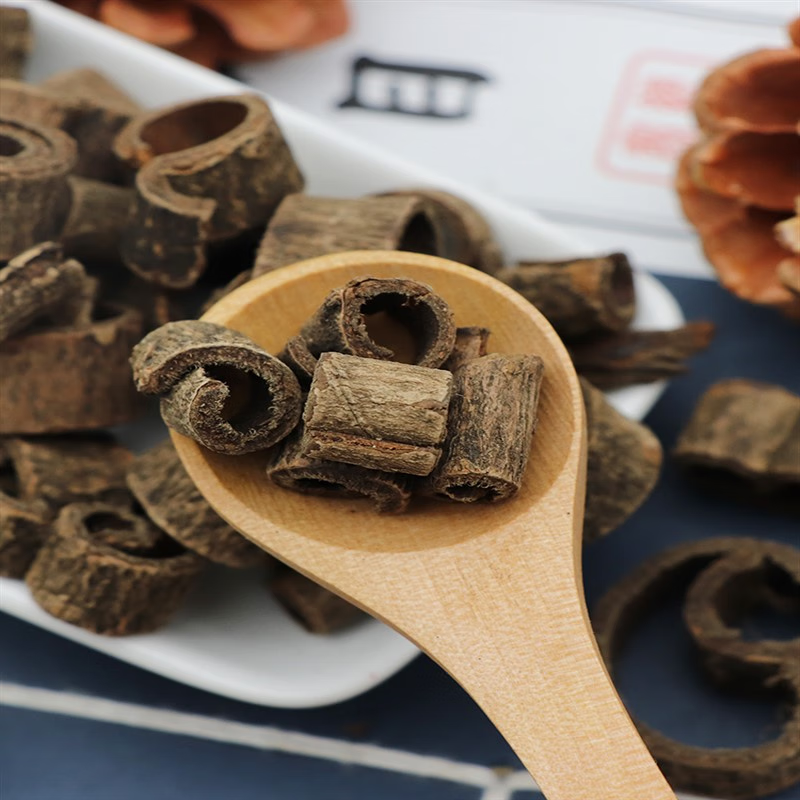


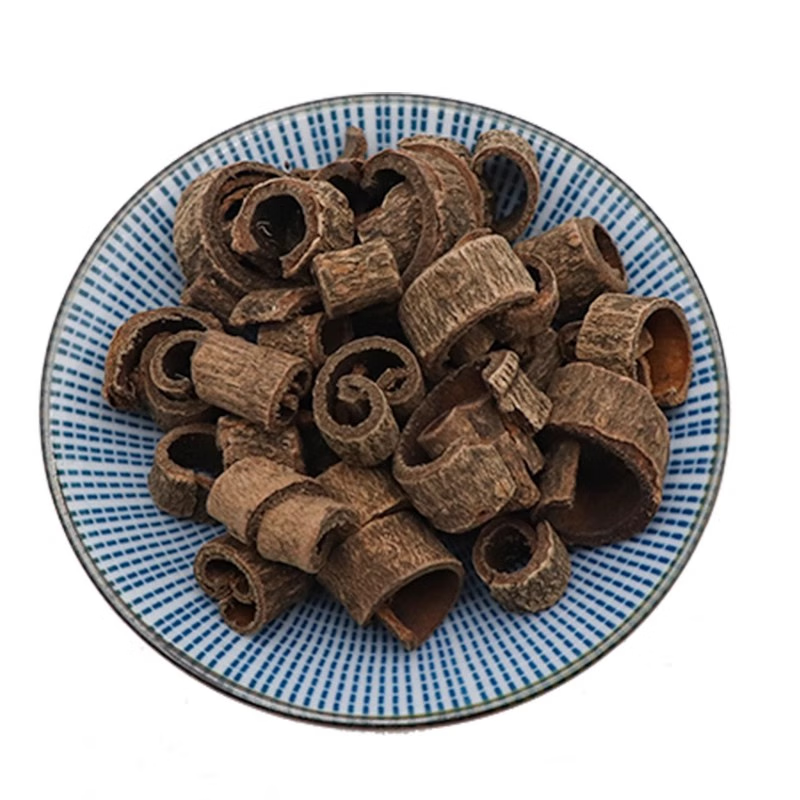


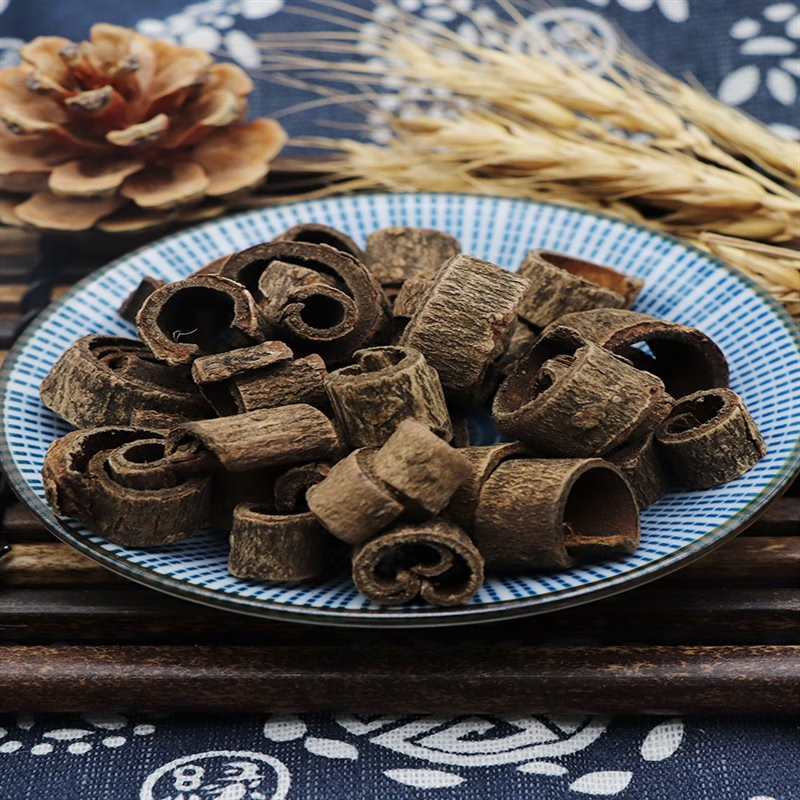










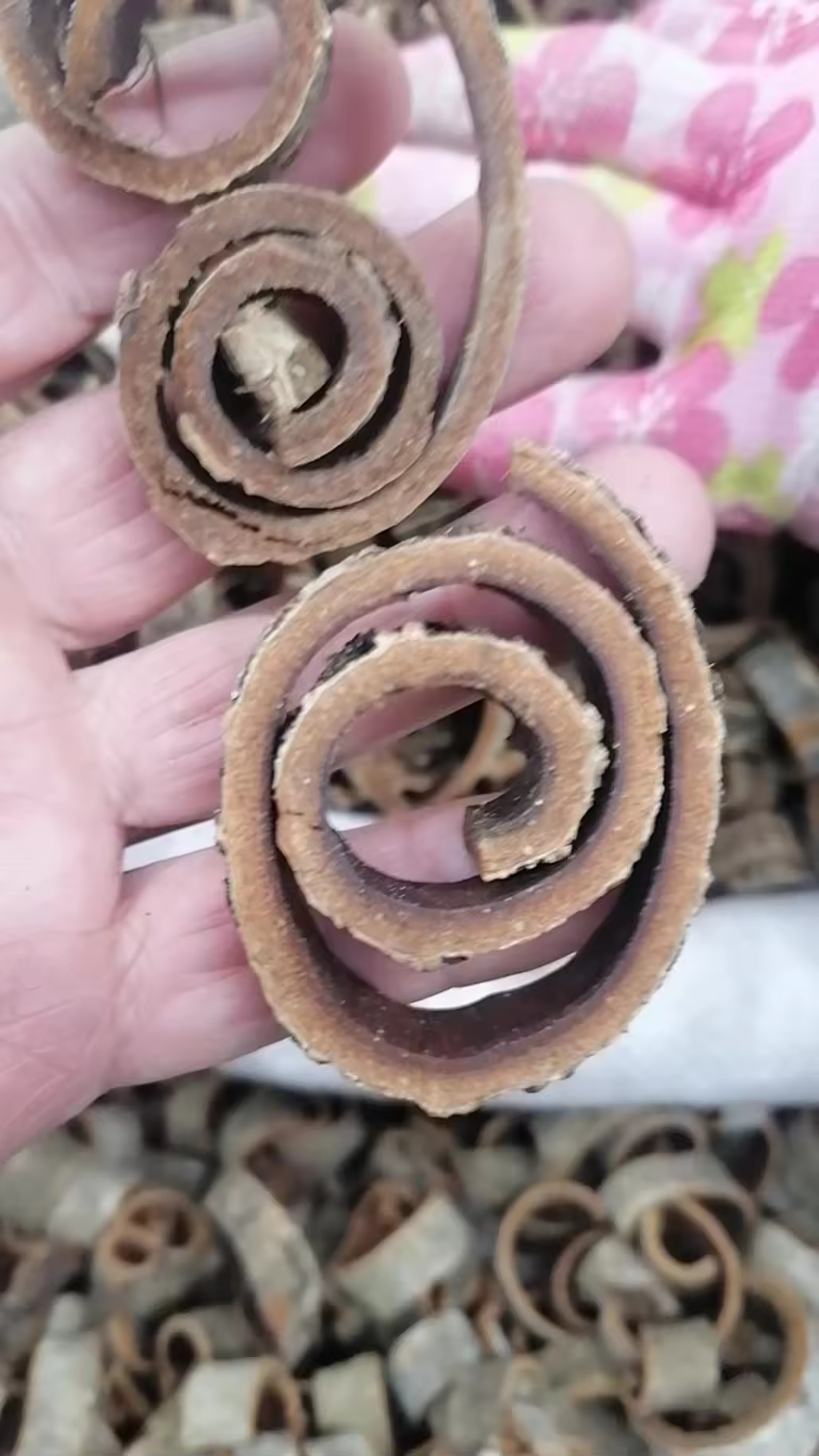




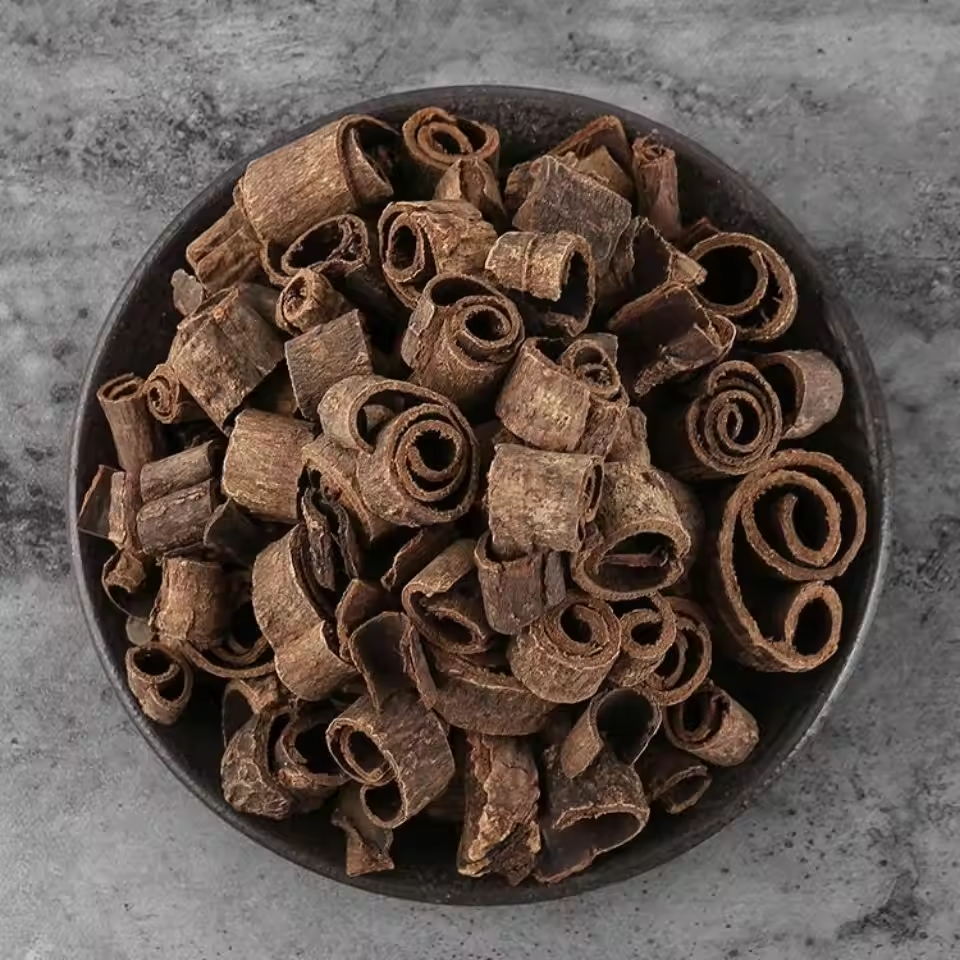

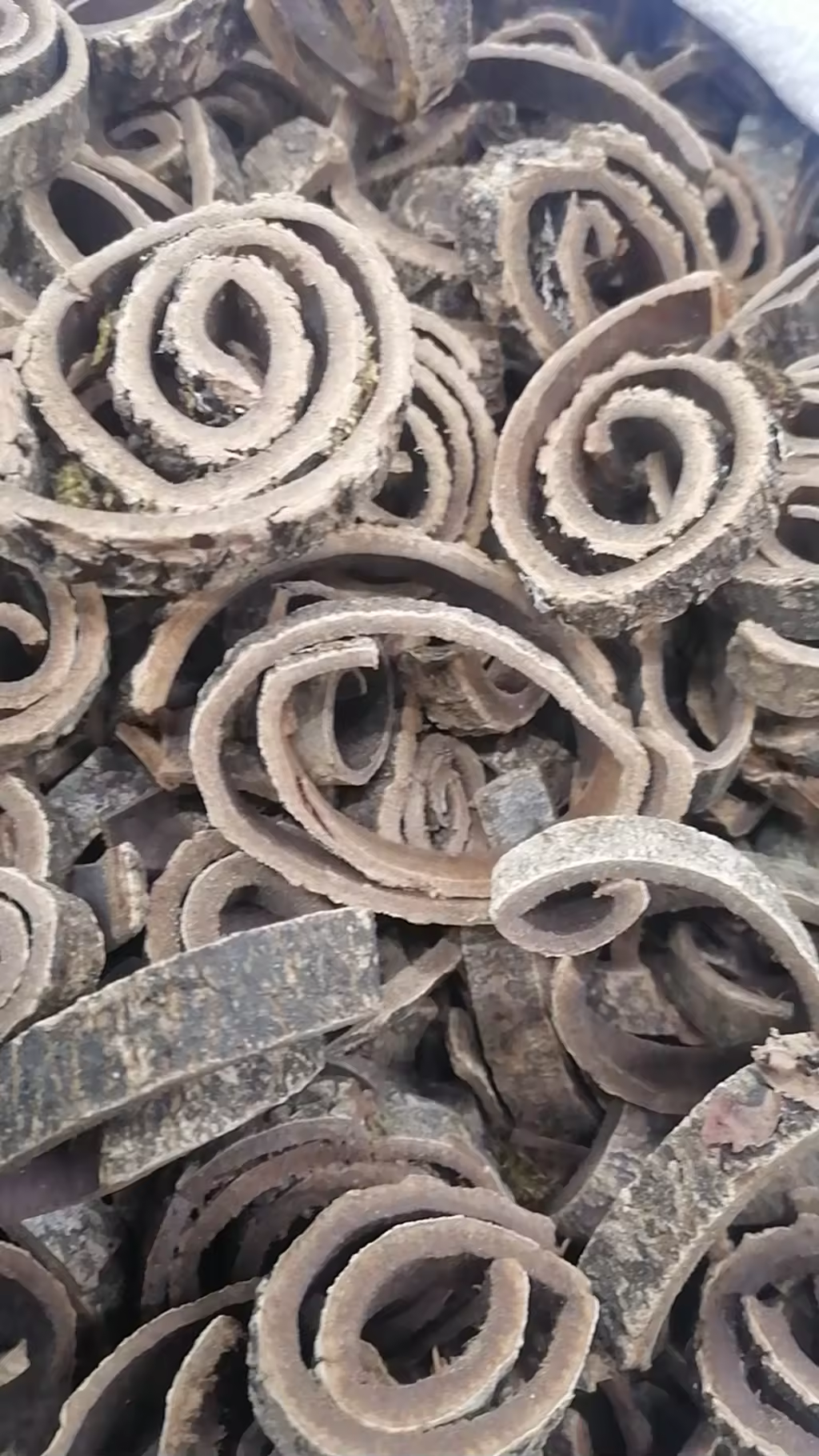
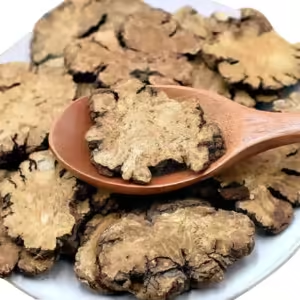

Reviews
There are no reviews yet.